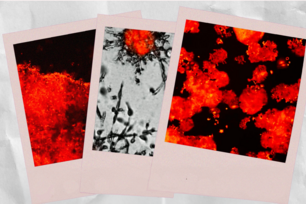
Schematic diagram of the Hsp90 protein
Breast cancer clinical trial to test combination of heat shock protein inhibitor and hormonal therapy
CAMBRIDGE, Mass. – Pushed to the brink of survival, the hyper-driven cells of a cancerous tumor tap into an ancient system that has helped organisms cope with internal stresses and environmental challenges since life began. As an integral part of this system, heat shock protein 90 (HSP90) has been shown to help malignant cells accommodate the genetic changes and profound disturbances in normal biology that occur in cancers.
Researchers have theorized that inhibiting HSP90 just might render breast cancer cells less likely to escape the challenge posed by cutting off their ability to use estrogen. Such is the rationale for a new clinical trial that has begun enrolling patients this week.
In the trial, patients with recurrent or metastatic estrogen receptor-positive (ER+) breast cancer will be treated either with fulvestrant, a drug currently marketed by AstraZeneca as Faslodex, or with a combination of fulvestrant and ganetespib, a drug which inhibits HSP90 and is now in clinical development by Synta Pharmaceuticals.
The trial’s principal investigator is Nancy Lin, the Clinical Director of the Breast Oncology Center at Dana-Farber Cancer Institute and Assistant Professor at Harvard Medical School. Lin is collaborating with Luke Whitesell, an oncologist and senior research scientist in the lab of Whitehead Institute Member Susan Lindquist.
Breast cancer is the most common cause of cancer-related deaths in women worldwide. An estimated 40,000 women in the United States are expected to die from the disease this year. In the developed world, approximately two-thirds of all breast cancer cases are ER+. Highly dependent on their estrogen receptors for growth and survival, these tumor cells are sensitive to hormonal therapies, making drugs like tamoxifen and fulvestrant effective first-line therapies for many patients.
However, in patients with breast cancers that recur or metastasize after initial hormonal therapy, long-term remission is uncommon and life expectancy is about three years. Currently, these patients have few therapeutic options. By adding an HSP90 inhibitor, Lin and Whitesell hope to hobble the resistant cancer cells, making them less likely to escape the effects of fulvestrant.
Lin likens a malignant tumor to a car on a highway in a high-speed chase. As the car hurtles down the road, police may erect a roadblock to stop it. In the case of ER+ breast cancer, that roadblock is hormonal therapy. Unfortunately, a tumor may mutate enough to find a detour around the roadblock and continue on its destructive course. Adding a heat shock protein inhibitor to the mix may thwart the cancer’s ability to find an alternate route.
“Because of the way HSP90 inhibitors work, it’s like throwing a bunch of roadblocks across a bunch of detours,” says Lin, who will be running the clinical part of the trial. “So the idea is to try to block these alternative pathways that might allow the tumor to grow.”
“Inhibiting HSP90 in tumors may not cause them to roll over and die,” says Whitesell, who with support from the Susan G. Komen for the Cure will be analyzing blood and tissue samples from trial participants. “But it may change the biology of the cancer to make it more susceptible to other things that we already know work against the cancer, like fulvestrant.”
The trial’s premise is based on years of work the Lindquist lab has conducted on heat shock proteins. That experience is invaluable, according to Sandro Santagata, a pathologist in the Lindquist lab who will also be examining patient tissue samples.
“The Lindquist lab has a great basic scientific understanding of the biology of the heat shock system,” says Santagata. “That foundation will hopefully provide important insights to increase the likelihood of success for this trial and if it doesn’t work, an understanding of why. That’s always a tricky part. Figuring out the ‘why’ is always complicated so it helps to have people like Susan and Luke who have a lot of background in the system you’re studying.”
For her part, Lindquist says she is looking forward to testing the therapeutic potential of targeting HSP90.
"I am very excited about the translational applications of some of the basic science we have been working on over the years," says Lindquist, who is also a professor of biology at MIT and a Howard Hughes Medical Institute (HHMI) Investigator. "Luke and I are thrilled to be working with Nancy Lin."
For more information on this trial, please call 617-632-3478.
This work is supported by the Susan G. Komen for the Cure and Synta Pharmaceuticals.
* * *
Susan Lindquist’s primary affiliation is with Whitehead Institute for Biomedical Research, where her laboratory is located and all her research is conducted. She is also a Howard Hughes Medical Institute investigator and a professor of biology at Massachusetts Institute of Technology.
* * *
Topics
Contact
Communications and Public Affairs
Phone: 617-452-4630
Email: newsroom@wi.mit.edu


